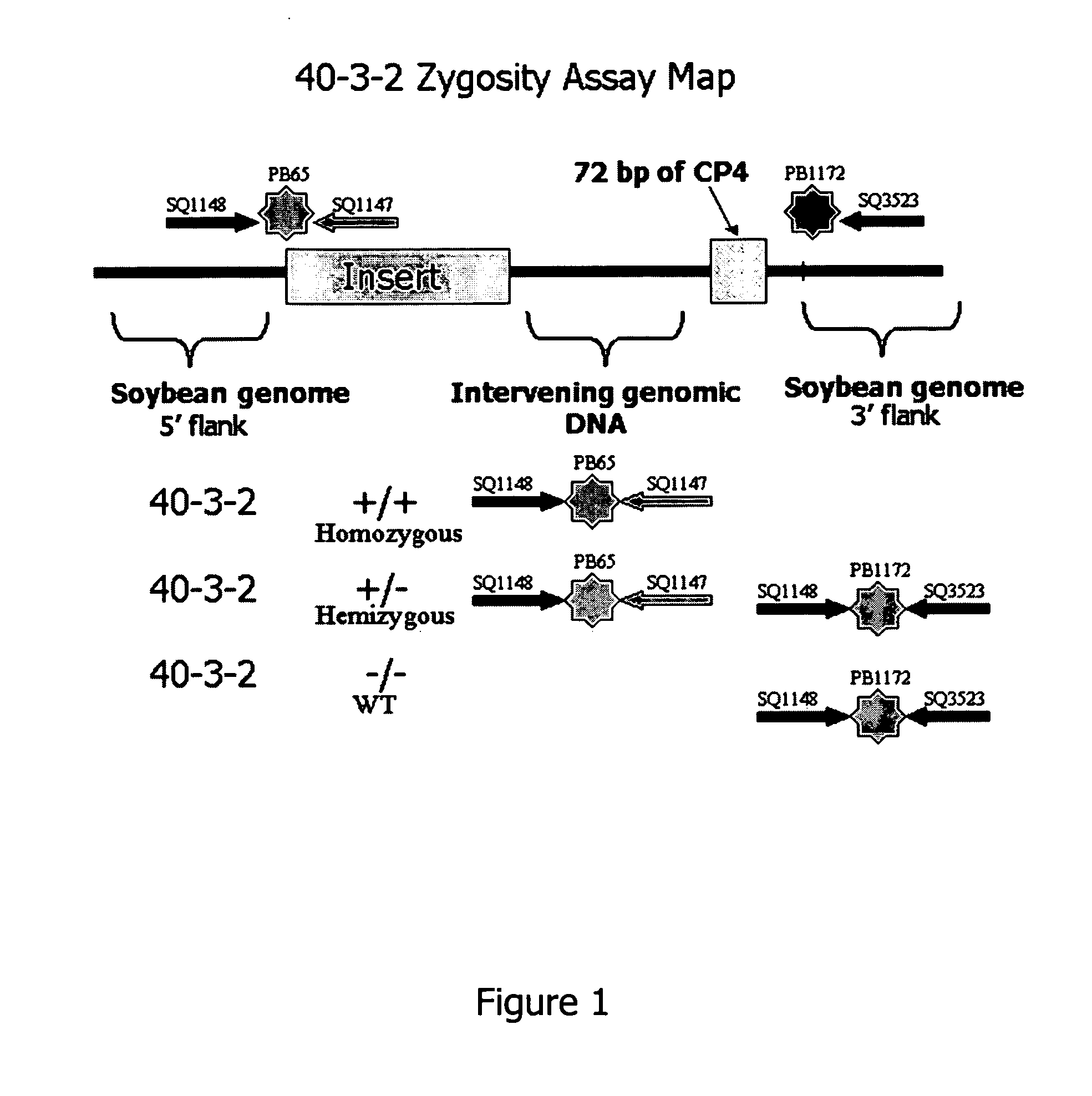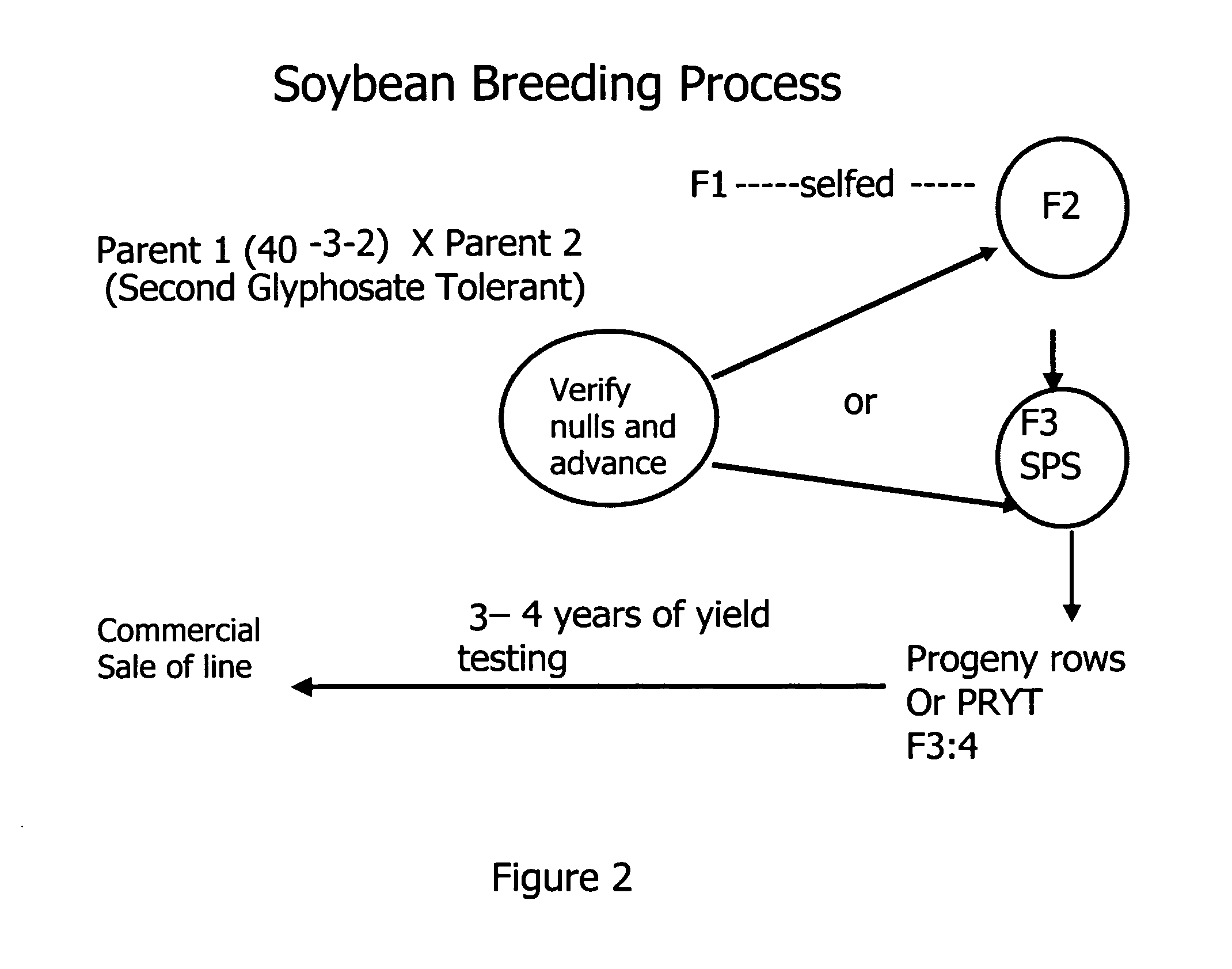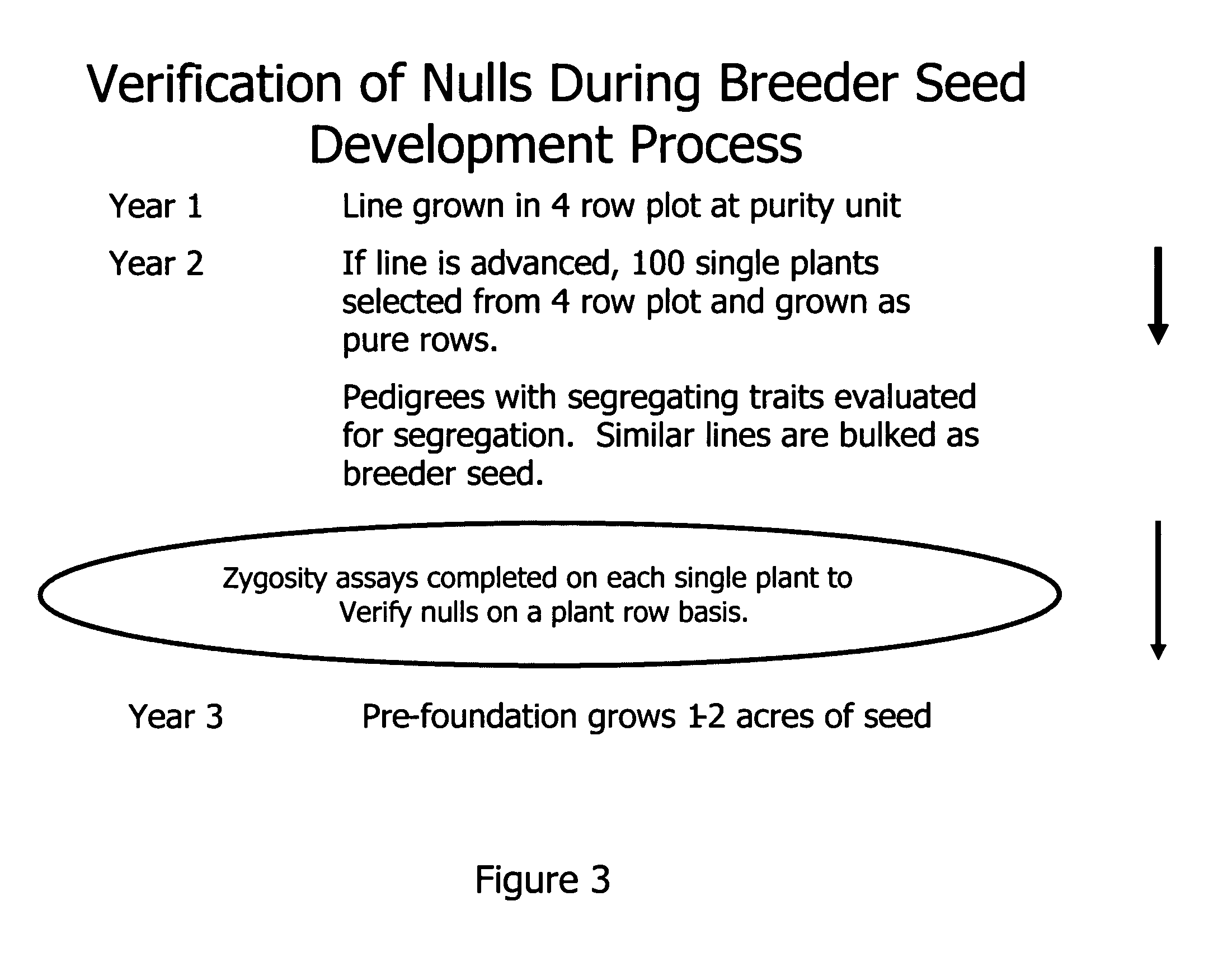Development of novel germplasm using segregates from transgenic crosses
a technology of transgenic crosses and germplasm, applied in the field of plant breeding, can solve the problems of notoriously sensitive to the concentration and purity of the starting template, and requires substantial time and effort to achieve, and achieve the effect of increasing the efficiency of the selection process
- Summary
- Abstract
- Description
- Claims
- Application Information
AI Technical Summary
Benefits of technology
Problems solved by technology
Method used
Image
Examples
example 1
Progeny of 40-3-2 Lacking Inserted DNA
[0047] An elite soybean cultivar comprising ROUNDUP READY® event 40-3-2 is crossed with a conventional (non-transgenic) cultivar, and segregation of traits and the transgene is followed by PCR zygosity testing. The presence of 5′ or 3′ junction sequences may be followed as shown schematically in FIG. 1. The PCR assay may be either singleplex, or multiplex. An internal quantitation control may be included. In the case of the 40-3-2 event, the inserted DNA consists of, in the 5′ to 3′ direction, a functional insert, an intervening (rearranged) genomic DNA, a non-functional 72 bp fragment of the gene encoding CP4 EPSPS, and additional genomic sequence. Referring to FIG. 1, use of primer set A-B-C on template DNA derived from progeny of a cross of soybean event 40-3-2 with another plant, for instance, allows one to positively differentiate between progeny that are homozygous for the inserted DNA, hemizygous for the inserted DNA, or lack the inserte...
example 2
Transgenic Progeny of 40-3-2 that Comprise a Different Glyphosate Tolerance Transgene, and do not Contain the Functional 40-3-2 Insertion
[0053] An elite soybean cultivar comprising ROUNDUP READY® event 40-3-2 may be crossed with a soybean cultivar comprising a different transgenic event that confers glyphosate tolerance, and segregation of the two transgenic inserts and additional agronomic traits is followed. The PCR-based zygosity test for sequences specific to event 40-3-2 is performed as described in Example 1. Similar zygosity testing may optionally be performed to identify progeny homozygous or hemizygous for the other transgenic event or events. Progeny are screened by the PCR-based zygosity test for loss of the 40-3-2 insertion, and selected for glyphosate resistance and other traits of interest.
[0054] The methods used to identify heterozygous from homozygous progeny containing 40-3-2 insertion DNA are described in a zygosity assay for which examples of conditions are desc...
example 3
Conversion of a GA21 Event-Containing Corn Line—Segment Analysis
[0057] The present invention may be applied to corn breeding. An inbred corn line comprising event GA21 was crossed to another inbred line comprising event NK603, and segregation of progeny was followed in order to efficiently identify progeny that lack sequences associated with the GA21 event, comprise the NK603 event, and exhibit other DNA markers of the original parent line that comprises GA21.
[0058] Conversion of the GA21 line was performed by means of a multi-tiered marker-assisted breeding approach of event-specific PCR-based assays, linked-marker PCR, and Southern blot analysis, to confirm the presence of event NK603-related DNA sequences and absence of event GA21-related DNA sequences. Following multiple backcrosses, we confirmed the presence of the NK603 event, and of DNA markers associated with the genetic background and agronomic qualities of the original parent that comprises GA21.
[0059] The recurrent par...
PUM
| Property | Measurement | Unit |
|---|---|---|
| Molar density | aaaaa | aaaaa |
| Molar density | aaaaa | aaaaa |
| Capacitance | aaaaa | aaaaa |
Abstract
Description
Claims
Application Information
 Login to View More
Login to View More - R&D
- Intellectual Property
- Life Sciences
- Materials
- Tech Scout
- Unparalleled Data Quality
- Higher Quality Content
- 60% Fewer Hallucinations
Browse by: Latest US Patents, China's latest patents, Technical Efficacy Thesaurus, Application Domain, Technology Topic, Popular Technical Reports.
© 2025 PatSnap. All rights reserved.Legal|Privacy policy|Modern Slavery Act Transparency Statement|Sitemap|About US| Contact US: help@patsnap.com



